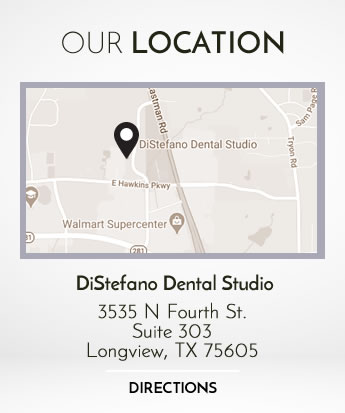
Family dentists can do so much for you and your family. A family dentist is able to perform any other task another dentist can do, but they’re able to perform them on your entire family. The convenience of this service to each member of your family will save you time and trouble. Your family dentist obtains everyone’s complete dental histories, and gives the best treatment possible based on an experienced review of those records.
Because a family dentist recognizes that your time is very valuable, appointments can often be made in blocks so that services can be offered to each member of your family on the same day, near the same time. You can make one trip and be finished with your routine dental checkups, x-rays, cleanings and preventative care for six more months!
Family dental offices also offer cosmetic dentistry services like teeth whitening or porcelain veneers. Dental crowns, dental bridges, fillings and other bonding work can easily be accomplished there. A family dentist also offers root canal treatments, extractions or emergency care.
Your family dentist wants to be a friend of your family for life. Having a dentist who has seen your children’s teeth through their formative years and into adulthood is of huge benefit to your children. As long as your children remain in the area, they will never have to search for another dentist. They will have formed a trusting and comfortable bond with the family dentist, ensuring that good oral hygiene habits will continue into adulthood, as will routine preventative care.
Sedation dentistry is likely to be offered at your family dentist, especially to any patient with a phobia or other anxiety about dental appointments. Even younger patients can benefit from sedation dentistry, allowing them to calm their bodies and to comply with requests by the dentist, keeping everyone safe during treatment.
You are the priority to your family dentist. The relationship that is formed with you and your family is one that your family dentist wants to see last a lifetime.
We treat patients from Longview and the surrounding area

Do you have children? Are you exhausted from driving all over town for clubs and meetings and appointments for your family? If you are finding yourself occasionally overwhelmed by the needs of your family, a family dentist can help you simplify one area of your life. A family dentist can see each member of your family, from the youngest to the oldest, sometimes on the same day in the same block of time!
Because of the rising popularity of family dental practices, you have more choices than ever to address the oral health needs of your entire family. Choosing the right one can be difficult and confusing. If you’re looking for a new family dentist, here are some factors you can consider when you’re choosing which family dental practice in your area is for you:
- How much training does this dentist have? How long has he or she been in business? All dentists must graduate from dental college, but a truly exceptional dentist will pursue continuing education courses in an effort to stay abreast of the latest methods and technology in their field. Ask what current certifications the dentist holds. How experienced is their staff?
- Are the employees and the dentist good with children? When you visit their offices, do you see an environment that’s inviting and warm? Are there games or activities for children of all ages? Are the magazines you see appropriate for all ages? Do the patients in the waiting area seem comfortable and relaxed? Does everyone you see seem happy? Did the front office staff greet you in a friendly manner? If any of the answers is no, then you should look at the practice more closely before you make an appointment.
- How modern is the office? A good family dentist will have current technology and sedation dentistry options to ensure a pleasant visit for all.
Choosing a family dentist is an important step. Don’t rush into it; do some research before you decide, and you can ensure that you make the best choice for your family.
If you need a dentist in Longview contact us today

You may be diligent about keeping up with your yearly physical with your general physician, but you may not be as careful about seeing your family dentist as often as you should. People tend to neglect dental checkups, thinking that if their teeth aren’t hurting then there’s no reason to go to the dentist. This is untrue! Regular checkups and cleanings play an important role in your health and should not be overlooked.
The most obvious reason for every member of your family to go to your dentist is the potential medical benefits. Even if you perform proper oral hygiene routines at home, you can still develop medical problems that require intervention. Plaque and decay in hard-to-reach places may create cavities that need fillings. Gum disease can start off as minor gingivitis but worsen into advanced periodontal disease without treatment, and untreated gum disease might put you at higher risk for heart disease or diabetes. A tooth’s interior section called the pulp can become infected and die, eventually risking tooth loss. So skipping your regular dental examinations can have serious medical consequences.
In addition to protecting your health, family dentists keep your smile looking its best. Professional cleanings make your teeth brighter and healthier, and you’ll also likely end up with more self-confidence. At your dental visits, if you have concerns about the appearance of your smile, you can also get information and recommendations about cosmetic dental procedures that might improve your smile even more.
Another benefit of maintaining regular dental checkups is that it can cost you less money in the long run. If you think skipping a visit is financially smart, you’ll also be missing the opportunity to catch problems early and handle them before they reach the stage of expensive oral procedures.
It’s never the best idea to avoid dental care with your family dentist. Schedule and keep your appointments every six months for ideal oral health.
Our dental office is located in Longview

Maintaining a healthy, winning smile is easy with the help of general dentistry. People have all kinds of excuses for avoiding dental checkups. Don’t have the time? Advancements in procedures make treatment faster and more efficient, and extended hours allow patients to better fit appointments in their schedules. Too expensive? Many procedures are reasonably priced and most offices offer financial plans. Afraid of the dentist? General dentistry offers options for maintaining patient comfort and minimizing pain.
Once you realize there is no good excuse for skipping dental treatment, you should go for checkups twice a year for optimum care. Prevention is often the key to having the best oral health. Routine checkups identify early warning signs of issues like tooth decay or gum disease, so that problems can be corrected before becoming severe. Thorough examinations, diagnostic tests like X-rays, and regular professional cleanings are all steps to a healthy smile.
General dentists also teach proper hygiene methods so that you can keep your mouth in good shape between checkups. Routine dental care also may prevent harmful bacteria from entering your bloodstream and damaging other parts of your body.
If problems are diagnosed when you visit your dentist, various treatments can be performed to restore your oral health. General dentists treat all kinds of issues and typically offer dental fillings, root canal therapy, extractions, bonding, crowns, dentures and more. If there are procedures that you need that your general dentist doesn’t perform or would prefer you visit a specialist for advanced treatment, you’ll be referred to a qualified and experienced doctor.
General dentistry can make the difference between a dull, damaged, unhealthy smile and one that will look nice and function well for the rest of your life. Don’t hesitate in visiting your dentist regularly for optimum oral health.
Schedule your appointment at our Longview dental office

Excellent dental care protects not only your oral health but also your general health. You may think brushing and flossing are enough to keep you safe from decay and disease, but routine care and examinations by a good general dentist are also an important and necessary part of taking care of your oral and general health.
A general dentist plays a vital role in identifying and treating minor problems before they become major ones. The primary focus of a general dentist is preventative care. Several essential services provided by a general dentist include:
Detecting and treating potential problems early may mean the difference between losing and saving an infected tooth. Caught early, gingivitis or periodontitis can be stopped and treated before becoming more serious problems.
A general dentist can treat your entire family, from the youngest child to the more senior members. It is your general dentist’s responsibility to oversee the diagnosis, treatment and overall coordination of all your dental health needs. Should you require specialized oral care, your general dentist can work with specialty dentists to ensure you receive the best possible care.
To guarantee the longevity of your oral health, look to a qualified general dentist for excellent dental care. A regular schedule of exams and cleanings by your general dentist
We treat patients from Longview and the surrounding area

Magazine articles often say that a smile reveals a person’s personality. If so, you don’t want to have dull, yellow, stained, dingy teeth! Instead you want a faultless set of pearly whites that communicates the best things about you, such as good hygiene and a confident air.
To transform your smile from dull to brilliant, teeth whitening is a great option. The field of dentistry has developed a whole array of products and procedures for brightening smiles. For example, patients may choose to completely hide their discolored teeth behind dental veneers. Or, tough stains can be covered up with dental bonding. If you’re looking for methods that simply bring your yellowed teeth back to a more appealing shade of white, there are several teeth whitening techniques to choose from:
- Over-the-counter products are available from your local drugstore including whitening strips, gels, pens, toothpaste, mouth rinses and more. These require consistent use following the directions, and take longer than most other methods. Most products do provide some level of improvement, but not as dramatic as professional methods.
- Home whitening methods are available from your dentist, such as customized trays that you fill with a special bleaching solution to wear at home for a period of time. At-home whitening typically takes several weeks to achieve desired results.
- Professional whitening is performed at the dentist’s office using specialized tools. It is the most effective method and results are visible in only about an hour, due to the highly concentrated bleaching solution and enhancement with ultraviolet light or lasers.
Teeth whitening not only brightens your smile but also can shape your entire personality. A common benefit is increased self-confidence because you no longer feel you need to hide your teeth, but instead you tend to smile and laugh and speak more easily. Feelings of embarrassment about your teeth can affect you in many ways, but a smile that you’re proud of can improve the way you interact with others. Ask your dentist about whitening methods that can help you improve both your smile and your personality.
Schedule your appointment at our Longview dental office









